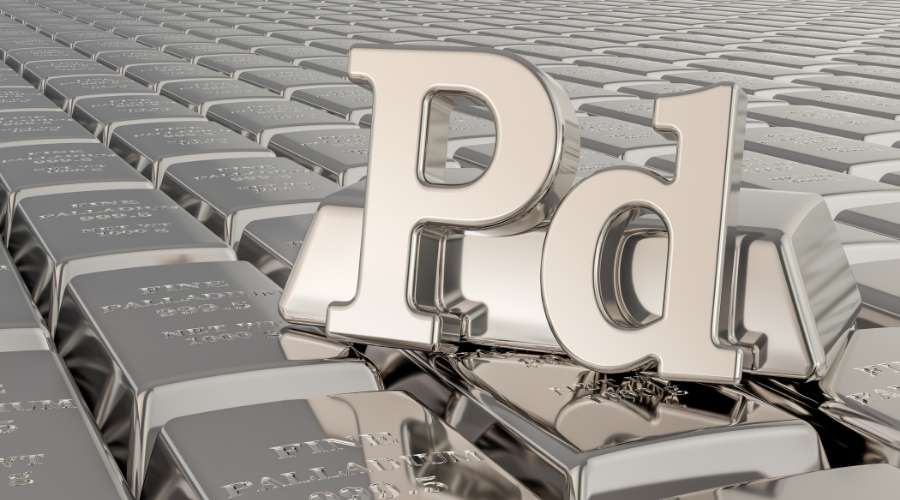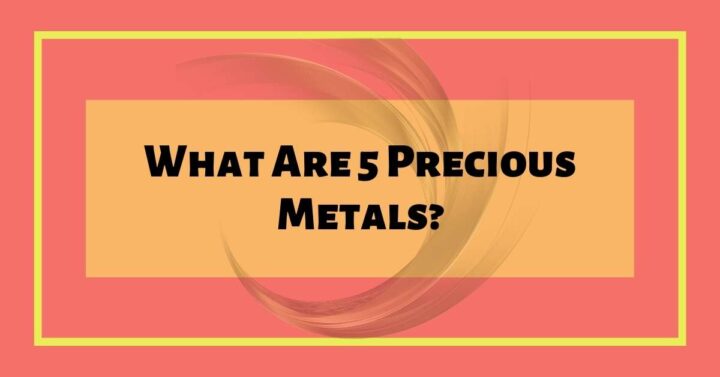What Are 5 Precious Metals?
Gold, Platinum, Silver, and palladium are not just precious metals. They’re also alloys with beautiful colors and unique properties that have fascinated humanity for centuries. This post will look at the history of these five metals and their science to provide some interesting facts and information about what makes each one so unique. Suppose you’re looking for a little more knowledge on precious metal alloying. In that case, you should read through our list of 5 very different metals below, which are often amalgamated to create alloys with unique properties.

5 Precious Metals
1. Gold
Gold is the most well-known metal in the world; rightly so, it’s been around for thousands of years and has always played an essential part in industry and trade. Gold has been used as money, in jewelry, in electronics, as part of our diet, and even on Mars! Gold has always held a special place in many cultures worldwide because of its rarity and the way it reflects light. It’s not just shiny, though – gold is a relatively soft metal that can be melted at a relatively low temperature. Combining these facts with its stylish appearance makes it easy to see why it’s considered one of the most precious metals on Earth. With more than $6 000 an ounce, this metal is primarily used in industry and jewelry making with very little use in electronics.
2. Platinum
The metal’s name is derived from its color – Platina is the Spanish term for silver. It has many practical applications in the industry due to its unique properties. It is almost impossible to erode or deform as a very dense and durable material. Thus it is used in jewelry and other items of value, as well as specific medical equipment where heat resistance is valued. It also cures cancer! Or at least platinum-based cancer drugs do – its immune cell-killing properties can be harnessed to kill cancerous cells in humans. Platinum is also used in producing catalytic converters and is an excellent conductor of heat and electricity.
3. Silver
It has a long history of use in jewelry, partly due to its aesthetic properties and partly because many believe it has protective healing qualities. It is said to be able to prevent or treat arthritis, rheumatism, and diabetes, while studies have shown that when pure silver is applied to the skin, it can reduce inflammation. Silverware is believed to prevent food poisoning, and in China and other countries, hard currency is sometimes made of silver or gold rather than the typical paper notes. Silver is also used in photography and space exploration due to its reflective properties – it helps spacecraft reach destinations more quickly as they can bounce solar energy back into space. With the help of Silver Applied Research Inc., NASA could reduce the wear on NASA spacecraft by 70%!
4. Palladium
Long noted as an excellent catalyst in the industrial, chemical, and chemical-engineering industries – examples include catalytic converters, catalytic reactors, and fuel cells – this metal can be found in many cars (platinum is used in exhaust systems and catalytic converters). However, it is also used in electrical wiring and even light bulbs. It is also a preferred alloy for electronics components exposed to high temperatures like smartphones. Another part of its name says it all – palladium is sometimes considered the best investment. It would help if you always had some in your investment portfolio, as its value has risen in the past few years.
5. Ruthenium
The metal’s name comes from the Latin word meaning “little silver,” and it was discovered in 1844 by Joel-Louis Fuchs. Ruthenium is also known as ruthenium chloride and even has a slightly bluish hue when polished due to its chemical similarity to copper. It was named after Russia because Russia had a massive deposit of it – hence the black market moniker “Russian Gold .”So popular is this metal that over 200 million pounds of it are produced annually, with Silicon Valley co-op Ochsner taking up about one-sixth of this amount. You might find it in more modern smartphones, laptops, and high-end camera lenses.

Conclusion
Precious metals are metals of relatively high rarity and monetary value (rare earth elements are not unique but are so named because they are often found in ore deposits near precious metals). They have been valued throughout history for their beauty, money use, and high corrosion resistance. While gold is the most valuable precious metal available today, many others have solid industrial uses and can be helpful in day-to-day situations.
